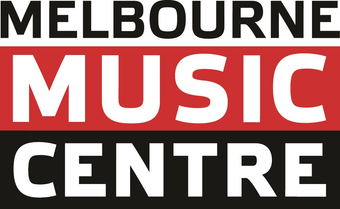Playing basic chords on guitar is a great way to start learning the instrument and build a foundation for more advanced playing. In this blog post, we'll go over the basics of how to play chords on guitar, including finger placement, strumming techniques, and some common chord progressions.
Understanding Chords
A chord is a group of three or more notes played together. On guitar, chords are formed by placing your fingers in specific positions on the fretboard. There are many different types of chords, but we'll focus on some of the most common ones that are easy for beginners to learn.
Finger Placement
To play chords on guitar, you'll need to place your fingers in specific positions on the fretboard. Here are some tips to help you get started:
Use the tips of your fingers: Place your fingers on the fretboard so that the tips of your fingers are pressing down on the strings. This will help you get a clear sound when you strum the strings.
Arch your fingers: Arch your fingers slightly so that you're only pressing down on the strings you need to play. This will help you avoid muting other strings by accident.
Keep your thumb behind the neck: Place your thumb behind the neck of the guitar, opposite your fingers. This will give you more control over your finger placement and make it easier to play chords.
Understanding Chord Diagrams
Chord diagrams are a visual representation of how to play a specific guitar chord. They show the guitar fretboard from a top-down view, with the vertical lines representing the strings and the horizontal lines representing the frets.
The dots on the diagram show where to place your fingers on the fretboard. The numbers inside the dots represent which fingers to use: 1 for index finger, 2 for middle finger, 3 for ring finger, and 4 for pinky finger.
Here is an example of a chord diagram for the C major chord in tablature format:
e|---0---|---|---|---|
B|---1---|---|---|---|
G|---0---|---|---|---|
D|---2---|---|---|---|
A|---3---|---|---|---|
E|-------|---|---|---|
1 2 3 4
In this diagram, the numbers on the frets indicate which fingers to use. The C major chord is played by placing your index finger on the first fret of the B string, your middle finger on the second fret of the D string, and your ring finger on the third fret of the A string.
Basic Guitar Chords
C Major
The C major chord is one of the most basic and popular guitar chords. It is played by placing your index finger on the first fret of the B string, your middle finger on the second fret of the D string, and your ring finger on the third fret of the A string.
G Major
The G major chord is another popular chord and is played by placing your index finger on the second fret of the A string, your middle finger on the third fret of the low E string, and your ring finger on the third fret of the high E string.
D Major
The D major chord is played by placing your index finger on the second fret of the G string, your middle finger on the second fret of the high E string, and your ring finger on the third fret of the B string.
E Major
The E major chord is played by placing your index finger on the first fret of the G string, your middle finger on the second fret of the A string, and your ring finger on the second fret of the D string.
A Major
The A major chord is played by placing your index finger on the second fret of the D string, your middle finger on the second fret of the G string, and your ring finger on the second fret of the B string.
Strumming Techniques
Once you've got your fingers in the right positions, it's time to start strumming. Here are some basic strumming techniques to get you started:
Downstrokes: Start by strumming down with your pick, hitting all of the strings in the chord. Make sure to use a fluid motion and avoid hitting any of the strings that aren't part of the chord.
Upstrokes: Next, try strumming up with your pick. This can be a bit trickier, so take your time and practice slowly.
Alternating downstrokes and upstrokes: Once you're comfortable with both downstrokes and upstrokes, try alternating between the two. This will help you develop a steady rhythm and make your playing sound more dynamic.
Common Chord Progressions
Finally, let's look at some common chord progressions that you can practice with. These are sequences of chords that are often used in popular music and can be great for beginners to learn:
G - C - D: This is a classic chord progression that you'll find in many songs. To play it, start with the G chord, then move to C, and finish with D.
C - G - Am - F: This is another common chord progression that's great for beginners. To play it, start with C, then move to G, then Am, and finish with F.
D - A - G: This chord progression is used in many classic rock songs. To play it, start with D, then move to A, and finish with G.
Conclusion
Playing basic chords on guitar is a great way to get started with the instrument and build a foundation for more advanced playing. By understanding finger placement, strumming techniques, and common chord progressions, you'll be well on your way to playing your favorite songs and developing your skills as a guitarist. Keep practicing, and don't be afraid to experiment with different chords and strumming patterns to find your own unique sound.

